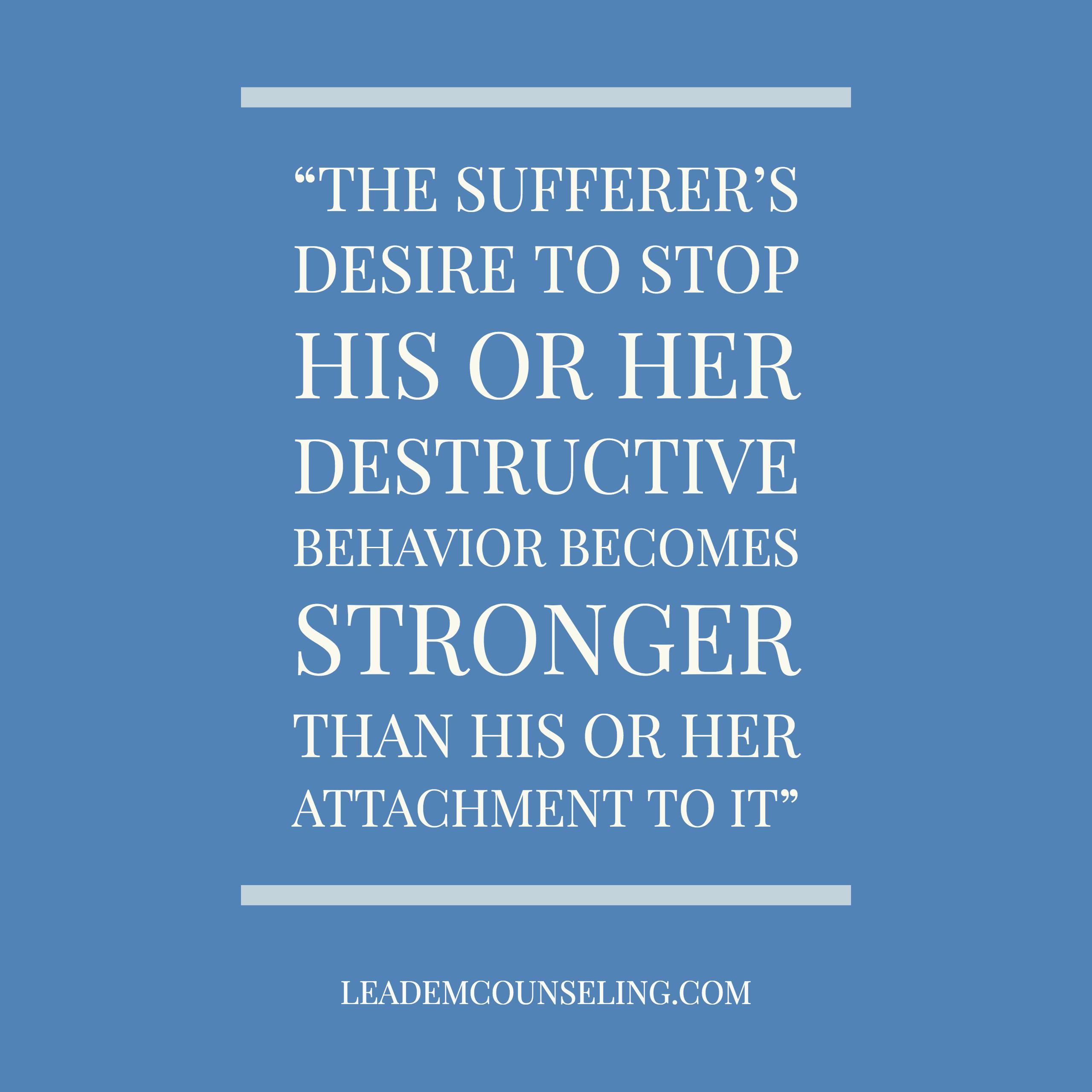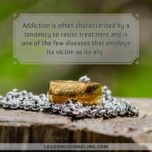What Is Intervention?
A successful intervention gets help for everyone who needs it!
 The Mayo Clinic staff [1], using a widely accepted definition, describes addiction intervention to be a carefully planned process that may be done by family and friends, who gather together to confront a loved one about the consequences of addiction and ask him or her to accept treatment. The notion of doing something to separate an addict from his or her drug of choice is not a modern concept. References to the impropriety of behaviors associated with the use of intoxicating beverages can be dated back to about 1754 BC with the Code of Hammurabi. Since then, much has been done to intervene on the addictive process that continues to take a huge toll on every person and system that interacts with the addict who is seen at the center of the problem.
The Mayo Clinic staff [1], using a widely accepted definition, describes addiction intervention to be a carefully planned process that may be done by family and friends, who gather together to confront a loved one about the consequences of addiction and ask him or her to accept treatment. The notion of doing something to separate an addict from his or her drug of choice is not a modern concept. References to the impropriety of behaviors associated with the use of intoxicating beverages can be dated back to about 1754 BC with the Code of Hammurabi. Since then, much has been done to intervene on the addictive process that continues to take a huge toll on every person and system that interacts with the addict who is seen at the center of the problem.
Addiction “Treatments” of the Past
William White’s [2] hallmark history of addiction treatment and recovery in the United States gives a solid account of the numerous strategies employed over the last two hundred years. They have been as innocuous as putting insects in alcoholics’ drinks, as radically political as temperance movements, and as harsh as institutionalization, sterilization and lobotomies (recall One Flew Over the Cuckoo’s Nest). White recounts a story of two bemused physicians, Drs. Walter Freeman and James Watts, who spent Christmas Eve in 1936 searching bars for one of their lobotomy patients, who had “pulled a hat down over his bandaged head and slipped out of the hospital in search of a drink.” While we are sure that there are many reasons this barbaric attempt to prevent the patient from returning to his drug of choice failed, one thing is likely to be at the top of the list. The intervention that the doctors used focused exclusively on the addict and ignored the family and societal systems that could have made a difference [3].
Unfortunately, things have not changed all that much in the past two hundred years. The focus is still on the identified problem who goes by the title of alcoholic, drug addict, compulsive gambler, sex addict to mention a few. Intervention efforts have become far more humane than the strategies used by the good doctors noted above but they are greatly lacking in scope and depth. We will focus a number of articles on the problems associated with using models with such a narrow scope and shallow depth but we must first back up to the starting point of most interventions and that is to address the reality that many addicted people can not identify the problem or initiate a long-term plan for eliminating that problem.
What is the Goal of Most Formal Interventions?
 The goal of most formal interventions is to get the addicted person separated from the drug of choice and help before circumstances get worse. The belief that addicted people must hit “rock bottom” before they can be helped has probably been around since beer was first fermented. We do not believe that a “rock bottom” must be reached before change can occur.
The goal of most formal interventions is to get the addicted person separated from the drug of choice and help before circumstances get worse. The belief that addicted people must hit “rock bottom” before they can be helped has probably been around since beer was first fermented. We do not believe that a “rock bottom” must be reached before change can occur.
Certainly, the need for acceptance of one’s personal powerlessness and the presence of unmanageability related to the use of an addictive substance was thought to be the bedrock from which sobriety would have to be formed. The addict may run head long into the wall of denial many times before hitting bottom and asking for help. The depths of the bottom are as different as the environment the addict suffers in. The addict often sees herself or himself sinking but cannot seem to cry for help.
Why Not Let the Addict ‘Hit Bottom’ on Their Own?
Desperate spouses will cry, “Why can’t he see what he is doing to himself? I don’t know how much longer he and the rest of the family can suffer!” (this quote was taken from another article by the same author). Clearly, they can see their loved one sinking into the abyss but their screams for help are drowned out by the howling winds of conflict. When someone hears their pleas, the help takes the form of compassion for the spouse’s burden but usually accompanied by the prediction that their loved ones will eventually come to their senses once the requisite amount of pain has been endured and a spontaneous moment of clarity and self-motivation leads them toward sustained sobriety.
Dark humorists might suggest quite a different outcome. They would promise that every addict will eventually attain drug freedom and rest from addiction. They might further explain, every addict eventually finds peace regardless of whether or not a bottom is struck – most will have to die first. We do not believe peace at any price is an acceptable formula for relief. In the worst-case scenario waiting for spontaneous insight is irresponsible and unloving. We believe that a decision to wait for the addict to see the light is a hazardous choice.
 In best case waiting passively for sufferers to come around can prove counterproductive. The disease of addiction is characterized not just by craving and lack of behavioral control, but also by the diminished ability to recognize and remember significant problems and pain for what they are (American Society of Addiction Medicine, 2011) [4]. The longer someone is active, the more his brain equates his addictive substance or behavior of choice with survival, and the more emotional connections are formed that give it intense, almost loving meaning (Kalivas & O’Brien, 2008; Kalivas & Volkow, 2005; McCauley, 2015) [5]. At the same time his shame and distrust begin to weigh him down.
In best case waiting passively for sufferers to come around can prove counterproductive. The disease of addiction is characterized not just by craving and lack of behavioral control, but also by the diminished ability to recognize and remember significant problems and pain for what they are (American Society of Addiction Medicine, 2011) [4]. The longer someone is active, the more his brain equates his addictive substance or behavior of choice with survival, and the more emotional connections are formed that give it intense, almost loving meaning (Kalivas & O’Brien, 2008; Kalivas & Volkow, 2005; McCauley, 2015) [5]. At the same time his shame and distrust begin to weigh him down.
He progresses into a constant state of defense against taking responsibility for, or even acknowledging the consequences of his behavior. The way he thinks, feels, speaks, and acts becomes fragmented, leading to a more and more distorted picture of who he is (Leadem & Leadem, 2009) [6].
While active sex addicts can and do achieve clarity and motivation, they seldom have the same insight or perception as those who want to help them. Johnson (1986) [7]called this dysfunction the delusional memory system. Carnes (2001) called it the addictive system. The longer people stay active, the more difficult it becomes for them to grasp the reality of the worsening consequences. In other words, the addict cannot see what he is doing to himself because he cannot see what he is doing to himself. He lacks the insight regarding the consequences that those who love him can see clearly. Without more support and guidance, it can become almost necessary for addicts to experience tremendous pain from diminished capacity and damaged relationships. They may need some sort of intervention – a collective effort to interrupt the destructive effects of the addictive disorder by helping the sufferer stop using, and develop new, healthy coping skills (Johnson, 1986).
What Does It Mean For an Addict To ‘Hit the Bottom’?
Currently, many in the addiction field decry as a dangerous myth the idea that addicts must “hit bottom” before self-motivation and sustained recovery can occur. An addict must hit a point in the progression of his or her illness that will allow him or her to see what others have usually known for some time – his or her drug of choice is not relieving pain it is contributing to it. Some clinicians and many in the general public alike seem to misunderstand the nature of hitting bottom. Perhaps bolstered by the stereotype of addicts lying half dead in a gutter before joining a self-help program, many assume hitting bottom means losing everything one holds near and dear, and in a material sense having nowhere to go but up.
 In the earlier decades of Alcoholics Anonymous, members did tend to have these types of “low bottoms.” Yet in the Twelve Step sense, hitting bottom is not measured by how much has been lost (Anonymous, 1952) [8]. It is considered the point in the addictive process whereby the sufferer realizes she can no longer deny or minimize her compulsions and their consequences. This is particularly true for addicts who no longer find relief from the pain of living with their drug of choice. More importantly, as a result of this realization, the sufferer’s desire to stop his or her destructive behavior becomes stronger than his or her attachment to it. Recovery wisdom refers to this moment of realization as being sick and tired of being sick and tired.
In the earlier decades of Alcoholics Anonymous, members did tend to have these types of “low bottoms.” Yet in the Twelve Step sense, hitting bottom is not measured by how much has been lost (Anonymous, 1952) [8]. It is considered the point in the addictive process whereby the sufferer realizes she can no longer deny or minimize her compulsions and their consequences. This is particularly true for addicts who no longer find relief from the pain of living with their drug of choice. More importantly, as a result of this realization, the sufferer’s desire to stop his or her destructive behavior becomes stronger than his or her attachment to it. Recovery wisdom refers to this moment of realization as being sick and tired of being sick and tired.
The current trend might be to disparage the idea of hitting bottom. But the process of an addict getting to the bottom of the barrel, that once held a seemingly endless supply of rationalizations and justifications, is critical but an addict should never be left in a free-fall to the cemetery.
Addiction is often characterized by a tendency to resist treatment and is one of the few diseases that employs its victim as its ally. This doesn’t mean that addicts willfully ignore the needs of others and actively make a defiant decision to stay miserable. Their cravings are not the same as, for instance, the desire for an ice-cold glass of lemonade on a hot day. They receive almost constant messages from deep within that they must engage in their behavior to be okay (McCauley & Reich, 2007) [9]. Even when addicted people know this is not true and want to be different, the compulsive desire for relief exists. They might present as calm and self-controlled on the outside, yet be at constant battle with a part of their own minds that tells them to protect the addiction at all costs. And, they can feel more afraid of admitting to this battle than to the consequences of their behavior. Far from feeling guiltless, they can end up feeling intense shame mixed with an already existing tendency to fear intimacy and emotional vulnerability. The end result can be almost constant denial and use of other defenses.
The Power of Denial
The addict’s family, friends, clergy, physicians and clinicians should bear in mind that denial is not just an addict’s way of avoiding being separated from his or her drug of choice. When things start to fall apart, denial is often the only anesthesia he or she has left. It is the only thing standing between him or her and a world of unimaginable pain and shame. Much has been written about understanding and dealing with shame in addicted people but exploring those strategies is outside the scope of this article. For the purpose of intervention, it is extremely important to know that getting through an addict’s defenses is never primarily an intellectual process. Those in active addiction usually already know they cannot stop their behavior and are harming themselves and others. They might be aware that they can no longer keep the pain at bay. But they feel imprisoned by it.
The process of hitting bottom can be conceptualized as reaching the point of emotional, relational and spiritual turmoil where denial of behavior and consequences can no longer be maintained; and, where consequently the desire to stop the destructive behavior becomes stronger than the attachment to it. A variety of addiction treatment models describe it in different ways, and it is generally agreed that client acceptance, engagement and willingness is the core determiners of successful treatment. The problem comes in believing that hitting bottom naturally occurs on its own, involves losing everything near and dear, and is a solitary journey.
Intervention Strategies
 Like treatment models, interventions may vary in style, but most have one thing in common. They are meant to actively raise the bottoms of addicts, so that the landing comes sooner, with less free fall and destruction and with a better chance of experiencing the positives of restoration and hope. It can be a bit precarious to discuss intervention as a tool for raising bottoms.
Like treatment models, interventions may vary in style, but most have one thing in common. They are meant to actively raise the bottoms of addicts, so that the landing comes sooner, with less free fall and destruction and with a better chance of experiencing the positives of restoration and hope. It can be a bit precarious to discuss intervention as a tool for raising bottoms.
Prior to such an intervention the addict has been sinking under the weight of his or her delusion that his drug of choice is the answer to life’s problems. His or her family has been driven by the erroneous perception that the solution would be found in simply separating the addict from that drug. Many treatment providers have not yet learned that helping the addict to get drug free is the easiest recovery challenge. Most intervention models use the same narrow and shallow strategic focal points:
- Make a plan: to get those concerned about the addict to meet for the purpose of getting the identified suffering person into treatment
- Gather information: about what is wrong and what needs to be done about it
- Form the intervention team: to bring the specific concerns to the addicted person so he or she can see the need for the help that will be prescribed
- Decide on specific consequences: each member of the intervention team will levy against the addict if help is refused
- Hold the intervention meeting and transport the identified problem to treatment
We do not believe that the goal of intervention should be to get the addict into treatment. We believe that the goal of intervention is to get everyone who needs help the treatment that he or she needs and not just the addict. In fact, we believe that if the addict sees everyone else getting help he or she will have no choice but to accept help. In the coming articles we will talk in greater depth about the scope and depth of strategies needed for a truly successful intervention.
See our book: An Ounce of Prevention: A Course in Relapse Prevention
Related Article(s):
How Can Family Help Intervene in Addiction? The Importance of the Intervention Team?
How to Avoid Relapse and How to Put a Relapse Prevention Technique Into Action
What is Relapse? What is Relapse Prevention?
About the Authors
 Elaine and John Leadem are the co-founders of Leadem Counseling & Consulting Services, P.C. (LCCS) and share a combined tenure in the addiction treatment field of over 69 years. They have authored and published a variety of titles designed to aid recovering addicts and their treatment providers in developing a comprehensive set of therapeutic resources from meditation guides for recovering couples to course material for developing individualized relapse prevention plans.
Elaine and John Leadem are the co-founders of Leadem Counseling & Consulting Services, P.C. (LCCS) and share a combined tenure in the addiction treatment field of over 69 years. They have authored and published a variety of titles designed to aid recovering addicts and their treatment providers in developing a comprehensive set of therapeutic resources from meditation guides for recovering couples to course material for developing individualized relapse prevention plans.
John’s personal mentorship by Vernon E. Johnson, Ph.D., the author of I’ll Quit Tomorrow and the pioneer of addiction intervention, led to the development their unique three-phase intervention model after 40 years of providing direct addiction intervention services. The model has been used in over 500 interventions and is easily adapted to a variety of substance addictions and other clinical problems. It is especially suited to work with process addictions, such as sex addiction, because it is designed to help the sex addict rise above the shame and accept help because each of the IT members are pointing the finger at themselves first.
Footnotes
[1] You can find this article at: http://www.mayoclinic.org/diseases-conditions/mental-illness/in-depth/intervention/art-20047451
[2] White, W. (1998). Slaying the Dragon: A History of Addiction Treatment and Recovery in America. Normal, IL: Chestnut Health Systems.
[3] You can find William L. White’s hallmark work: Slaying the Dragon: The History of Addiction Treatment and Recovery in America at: https://www.amazon.com/Slaying-Dragon-Addiction-Treatment-Recovery/dp/0692213465/
[4] American Society of Addiction Medicine (2011). Public Policy Statement: Definition of Addiction. Found on ASAM: The Voice of Addiction Medicine. Retrieved January 29, 2015. http://www.asam.org/for-the-public/definition-of-addiction
[5] Kalivas, P.W. & O’Brien, C. (2008). Drug addiction as a pathology of staged neuroplasticity. Neuropsychopharmacology 33, 166–180.
Kalivas, P.W. & Volkow, N.D. (2005). The neural basis of addiction: A pathology of motivation and choice. American Journal of Psychiatry, 162. 1403–1413
[6] Leadem, J.V. & Leadem, S.M. (2009). An Ounce of Prevention: A Course in Relapse Prevention. Tom’s River, NJ: Leadem Counseling and Consulting Services, PC
[7] Johnson, V.E. (1986). Intervention: How to Help Someone Who Doesn’t Want Help. Center City, MN: Hazeldon.
[8] For more information about Alcoholics Anonymous got to: https://www.aa.org
[9] McCauley, K.T. & Reich, C.A. (2007). Addiction: New Understanding; Fresh Hope; Real Healing. Salt Lake City, UT: Institute for Addiction Study.
© Copyright, John Leadem & Elaine Leadem, 2017
You are free to copy this article for future reference, to post it on other web sites and to share it with family or friends. If you would like to have permission to include it in a publication of your own you can request written permission by contacting the authors at www.leademcounseling.com.
[apss-share networks="facebook, twitter, google-plus, pinterest, linkedin" counter="0" total_counter="0" http_count="1"]







No Comments Yet | Post Comment
You can be the first to comment!
Leave a comment